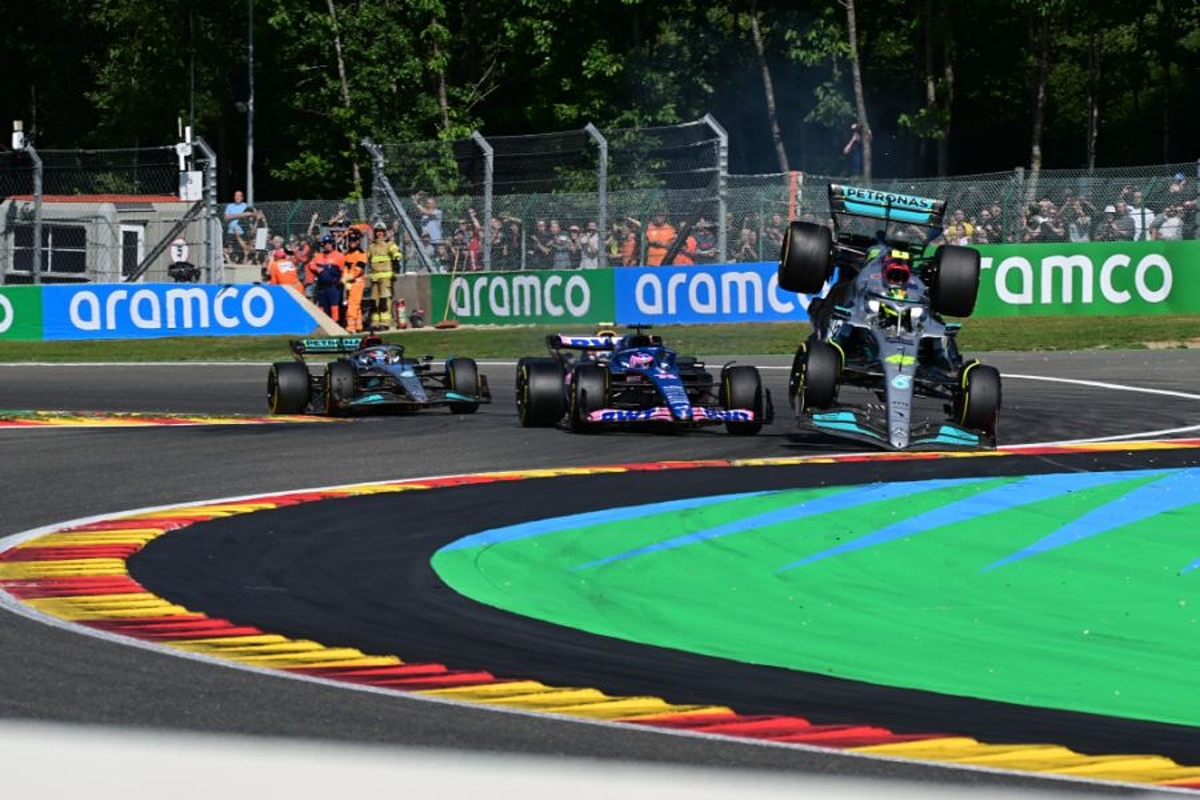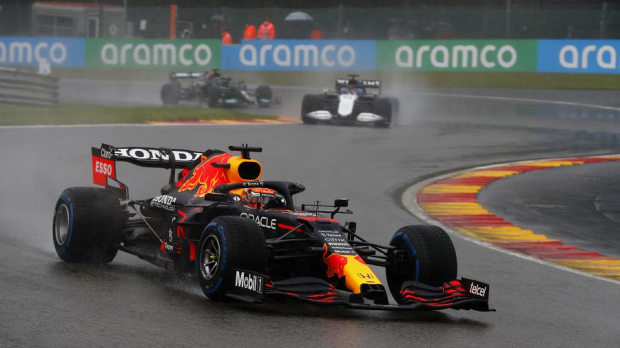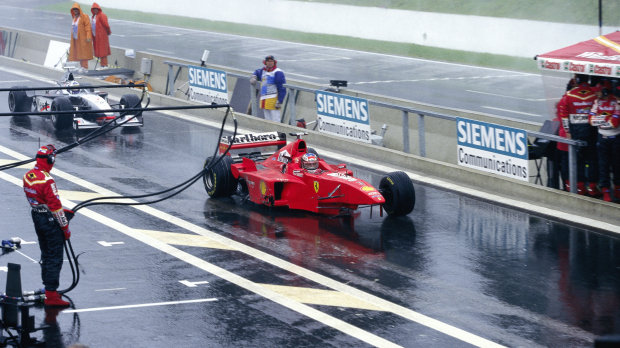
Spa-Francorchamps' deadly history – and why fixing it has taken so long
Spa-Francorchamps' deadly history – and why fixing it has taken so long

Nestled amidst the picturesque Ardennes forests in Belgium, Circuit de Spa-Francorchamps is revered as one of the most iconic racetracks in motorsport history thanks to its undulating layout and challenging corners.
However, beneath its allure of high-speed thrills lies a troubling truth – the circuit's poor safety record that has broken bones, destruction and death woven into its past.
Over the years, Spa-Francorchamps has been marred by numerous accidents and incidents, including a fatal crash this very month, highlighting its inherent dangers and prompting concerns among drivers, teams, and fans alike.
READ MORE: F1 expert explains how teams decide when to RISK slick tyres in rain
Recent Spa-Francorchamps Crashes
Irrespective of inclement conditions, the Eau Rouge-Raidillon complex, a breathtakingly fast sequence of corners, has claimed its fair share of victims over the years.
Accidents here can be brutal, as seen in the tragic crash of Anthoine Hubert during the 2019 Formula 2 race, where he lost his life in a crash that also saw Juan Manuel Correa in a wheelchair.
Spa changed the tyre barriers in the wake of that fateful day in 2019, yet further incidents continue to plague the circuit.
Short-term Williams driver Jack Aitken fractured his collarbone and suffered a broken vertebra resulting in hospitalisation during the 2021 Spa 24 Hours in eerily similar circumstances to Hubert's crash.
That same month had a six-car pile-up in W Series. Greasy conditions had multiple cars lose control on the Eau Rouge exit and were left to become car-shaped barriers on the run-off area for other competitors to hit. Beitske Visser and Ayla Agren were thankfully later discharged from hospital without injury.
And then, of course, we come to Dilano van 't Hoff's crash just weeks ago, where the race's restart in wet conditions had him crash out on the run to the Kemmel straight, left helpless to avoid contact when another car smashed into his side.
What's to Blame?
Not all of these incidents are the same, with the only consistent parts being the metres of track between Eau Rouge and the Kemmel Straight and the involvement of multiple cars.
One of the most significant safety concerns at Spa-Francorchamps in any given race is the unpredictable and changeable weather conditions.

The circuit's location exposes it to the whims of nature, and rain can descend upon the track without warning, causing multiple accidents during countless races, with drivers struggling to adapt to rapidly changing grip levels and visibility.
Yet Hubert and Aitken's incidents came in dry conditions, highlighting that rain is just one part of the problem, and the circuit's characteristics have some share of the blame, despite what some hardcore fans might want to hear.
Lance Stroll and Max Verstappen were vocal in the wake of Van 't Hoff's death, calling for the track to do something like move the barriers further out.
Yet Spa-Francorchamps will be the same this weekend, with little time for the circuit to make any significant alterations and receive FIA approval before the Grand Prix.
Naturally Dangerous
The topology of Spa is part of its charm, but also one of the most significant stumbling blocks to improving safety and reducing any possibility of its accidents hospitalising or killing drivers.
A forested hill to the left of Raidillon and a valley to the right means expensive terraforming is a prerequisite to extending the run-off areas and reducing the chances of cars bouncing back into traffic.
That's likely the best solution without changing the track's iconic layout, yet the cost of almost literally moving mountains is a significant roadblock.
In spite of all the above, you cannot overstate the increased danger of racing at Spa in wet weather.
A single-seater car's visibility in the spray is appalling at best and non-existent at worst.

Combining the blind crest of Raidillon, where visibility of the track ahead is temporarily removed, and following in the spray of those ahead is a double-whammy that Spa can mitigate today.
Throwing out safety cars or red flags because of rain is never welcome. However, a pragmatic approach at this circuit in light of recent events must be a priority as the Grand Prix circus rolls into town until Spa finds a longer-term solution.
Somehow, striking the right balance between preserving its legendary character and prioritising safety is paramount to ensuring a safer future for all that race at Spa-Francorchamps.
READ MORE: Best F1 TV commentators and presenters: GPFans Broadcaster Power Rankings
Related
Change your timezone:
Latest News

McLaren boss keen for stunning Alonso REUNION
- 28 minutes ago

Schumacher BLAMES Horner for Red Bull's Newey nightmare
- 1 hour ago

Hamilton in Ferrari F1 SHOCK after team snub revealed
- 2 hours ago

Newey set for CRUCIAL meeting over Red Bull future
- 2 hours ago

F1 News Today: ‘Absolute b******s’ Newey claims slammed as Norris INJURED while partying
- Today 05:57

Hamilton hit with SURPRISE Ferrari claim as new Cullen relationship blossoms - GPFans F1 Recap
- Yesterday 23:57
Related news

Legendary F1 circuit could be ditched due to spiralling costs

F1 confirms renewal of KEY race contract until 2025

Brundle names the ONE F1 driver operating well above expectations

F1 legend slams UNFAIR FIA proposal after 'deceiving fans'
F1 Standings

Drivers
- Oliver Bearman
- Charles Leclerc
- Carlos Sainz
- Lando Norris
- Oscar Piastri
- Pierre Gasly
- Esteban Ocon
- Sergio Pérez
- Max Verstappen
- Alexander Albon
- Logan Sargeant
- Lewis Hamilton
- George Russell
- Nico Hülkenberg
- Kevin Magnussen
- Fernando Alonso
- Lance Stroll
- Valtteri Bottas
- Zhou Guanyu
- Daniel Ricciardo
- Yuki Tsunoda
Races
-
 Gulf Air Grand Prix of Bahrain 2024
Gulf Air Grand Prix of Bahrain 2024
-
 Saudi Arabian Grand Prix 2024
Saudi Arabian Grand Prix 2024
-
 Grand Prix of Australia 2024
Grand Prix of Australia 2024
-
 MSC Cruises Grand Prix of Japan 2024
MSC Cruises Grand Prix of Japan 2024
-
 Grand Prix of China 2024
Grand Prix of China 2024
-
 Miami Grand Prix 2024
Miami Grand Prix 2024
-
 Gran Premio dell'Emilia Romagna 2024
Gran Premio dell'Emilia Romagna 2024
-
 Grand Prix of Monaco 2024
Grand Prix of Monaco 2024
-
 Grand Prix du Canada 2024
Grand Prix du Canada 2024
-
 Gran Premio de España 2024
Gran Premio de España 2024
-
 Grand Prix of Austria 2024
Grand Prix of Austria 2024
-
 Grand Prix of Great Britain 2024
Grand Prix of Great Britain 2024
-
 Grand Prix of Hungary 2024
Grand Prix of Hungary 2024
-
 Grand Prix of Belgium 2024
Grand Prix of Belgium 2024
-
 Heineken Dutch Grand Prix 2024
Heineken Dutch Grand Prix 2024
-
 Grand Prix of Italy 2024
Grand Prix of Italy 2024
-
 Grand Prix of Azerbaijan 2024
Grand Prix of Azerbaijan 2024
-
 Grand Prix of Singapore 2024
Grand Prix of Singapore 2024
-
 Grand Prix of the United States 2024
Grand Prix of the United States 2024
-
 Gran Premio de la Ciudad de Mexico 2024
Gran Premio de la Ciudad de Mexico 2024
-
 Grande Prêmio de São Paulo 2024
Grande Prêmio de São Paulo 2024
-
 Heineken Silver Las Vegas Grand Prix 2024
Heineken Silver Las Vegas Grand Prix 2024
-
 Qatar Grand Prix 2024
Qatar Grand Prix 2024
-
 Grand Prix of Abu Dhabi 2024
Grand Prix of Abu Dhabi 2024
About GPFans
GPFans is a multi-platform, multi-language brand dedicated to Formula One coverage. We bring you all the ins and outs of the sport, 24/7, everything from up-to-the-minute news and features to the latest viral stories and clips.We believe that a new generation of exciting, outspoken drivers will make F1 more popular than ever before, and we want to give our users access to as much of their heroes as possible, on and off the track. From Lewis Hamilton to Max Verstappen, Daniel Ricciardo to Sebastian Vettel, we provide in-depth analysis of every every Grand Prix in the season, from Australia to Abu Dhabi.
With Formula One under the new ownership of Liberty Media, how the sport is being covered is evolving, and GPFans will look to be at the heart of this progression into new media, as one of the fastest-growing sites covering the king of motorsports.
Follow us on your favorite social media channel
Corporate & Media
 Innovatieweg 20C
Innovatieweg 20C7007 CD, Doetinchem, Netherlands
+31645516860



















 Gulf Air Grand Prix of Bahrain 2024
Gulf Air Grand Prix of Bahrain 2024  Saudi Arabian Grand Prix 2024
Saudi Arabian Grand Prix 2024  Grand Prix of Australia 2024
Grand Prix of Australia 2024  MSC Cruises Grand Prix of Japan 2024
MSC Cruises Grand Prix of Japan 2024  Grand Prix of China 2024
Grand Prix of China 2024  Gran Premio dell'Emilia Romagna 2024
Gran Premio dell'Emilia Romagna 2024  Grand Prix of Monaco 2024
Grand Prix of Monaco 2024  Grand Prix du Canada 2024
Grand Prix du Canada 2024  Gran Premio de España 2024
Gran Premio de España 2024  Grand Prix of Austria 2024
Grand Prix of Austria 2024  Grand Prix of Hungary 2024
Grand Prix of Hungary 2024  Grand Prix of Belgium 2024
Grand Prix of Belgium 2024  Grand Prix of Azerbaijan 2024
Grand Prix of Azerbaijan 2024  Grand Prix of Singapore 2024
Grand Prix of Singapore 2024  Gran Premio de la Ciudad de Mexico 2024
Gran Premio de la Ciudad de Mexico 2024  Grande Prêmio de São Paulo 2024
Grande Prêmio de São Paulo 2024  Qatar Grand Prix 2024
Qatar Grand Prix 2024  Grand Prix of Abu Dhabi 2024
Grand Prix of Abu Dhabi 2024